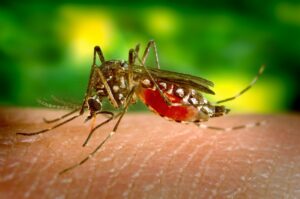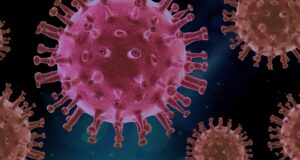Bioterrorism- A Terror of the World

By Sudipata Samajdar, PhD NHI – February 4, 2020
A biological attack, or bioterrorism, is the intentional, planned and deliberate use of pathogenic strains of viruses, bacteria, or other germs that can sicken or kill people, livestock, or crops. on a mass scale in order to devastate the population of an area. These agents are naturally originated in the environment, but it is probable that they could be genetically modified to enhance their ability to infect and to be spread more easily into the nature. These genetic modifications also make them resistant to current medicines and vaccines. The successive outbreaks caused by newly recognized and resurgent pathogens and the risk that high-consequence pathogens might be used as bioterrorism agents sufficiently reveal the requirement to augment capacity in clinical and public health management of extremely communicable diseases. Bioterrorism may be preferential as uses of biological agents are quite easy and inexpensive, can be easily spread, and can cause extensive terror and panic beyond the actual physical damage. But, bioterrorism has some important restrictions also; it is hard to use a bioweapon in a way that only affects the opponent and not own people. A biological weapon can be used to create a mass panic by terrorists groups, in a country.

Bioterrorism presents a compound national, international, and human security hazard, which needs a multidisciplinary approach for fighting against it. The global events of the last two decades indicate that the threat of biological warfare is a harsh truth. We must concern about the agents used, and measures to counteract it, with a relevant note on India’s current set-up of surveillance systems, laboratory based network, and the necessity for watchfulness.
A variety of types of biological warfare have been practiced repeatedly right through history. This has incorporated the use of biological agents (microbes and plants) as well as the bio toxins, including venoms. Assyrian politicians’ dumped fungus from rye into their opponents′ wells, giving them fatal ergot poisoning in 650 BC. Tatars of the 14th century spread bubonic plague by catapulting diseased corpses into towns. In World War I, United States and Germany developed biological weapons to pollute animal food. Dr. Anton Dilger was working for Germany between 1915 and 1916, with the intention of biological manipulation in the United States, Russia, Romania, and France. In the time of Cold War, United States and Soviet Union developed arsenals of biological agents. In 1972, police in Chicago arrested two college students, Allen Schwander and Stephen Pera, who had planned to poison the city’s water supply with typhoid and other bacteria. In 1984, pseudo-Buddhist Rajneeshee cult dispersed Salmonella in restaurants and grocery stores in Oregon to gain control of the local administration. In 1992, Russia had the ability to launch missiles containing weapons-grade small pox. In June 1993, the religious group Aum Shinrikyo released anthrax in Tokyo. A number of terrorist organizations, including Al-Qaeda, have explored the use of biological agents.
The Center for Disease Control and Prevention (CDC) ranks the biological agents and diseases that have the potential to be used as weapons into three categories. Category A is high-priority agents create a threat to national security, very contagious in nature, result in high morbidity and mortality rate and cause sufficient panic in the society. These are mainly, Tularemia or “rabbit fever, Anthrax, Smallpox, Botulinum toxin, Plague, Viral hemorrhagic fevers. Botulinum toxin is readily available worldwide due to its cosmetic applications in injections. Bubonic Plague is a disease caused by the Yersinia pestis bacterium. Rodents are the normal host of plague, and the disease is transmitted to humans by flea bites and occasionally by aerosol in the form of pneumonic plague. Viral hemorrhagic fevers includes hemorrhagic fevers caused by members of the family Filoviridae (Marburg virus and Ebola virus), and by the family Arenaviridae (for example Lassa virus and Machupo virus).
Category B agents are moderately easy to disseminate and have low mortality rates. These include Brucellosis (Brucella species), Epsilon toxin of Clostridium perfringens, Salmonella species, E coli O157:H7, Shigella, Staphylococcus aureus, Staphylococcal enterotoxin B, Typhus (Rickettsia prowazekii), viral encephalitis, water supply threat (Vibrio cholerae, Cryptosporidium parvum).
Category C agents are budding pathogens like Nipah virus and Hanta virus that might be engineered for mass dissemination because of their availability, ease of production and dissemination, high mortality rate, or ability to cause a major health impact.
Studies reveled that indoor attacks in densely populated area are much more serious than outdoor attacks. Contra-measures against this scenario are the further limitation of access to the water supply systems, tunnels, and infrastructure. Anti-agriculture attacks are considered to require relatively little expertise and technology. Biological agents against livestock, fish, vegetation, and crops are mostly not contagious to humans and therefore easier to handle by the attackers. Even a few cases of infections can disrupt a country’s agricultural production and export for months like in the case of ‘foot and mouth disease’ or Anthrax.
Government agencies which would be called on to respond to a bioterrorism incident would include law enforcement, hazardous materials and decontamination units, and emergency medical units, if obtainable. Lastly we should not forget that the public plays a fundamental part of every aspect of bioterrorism, their understanding and attitudes towards the bioterrorism have not been extensively researched yet.










